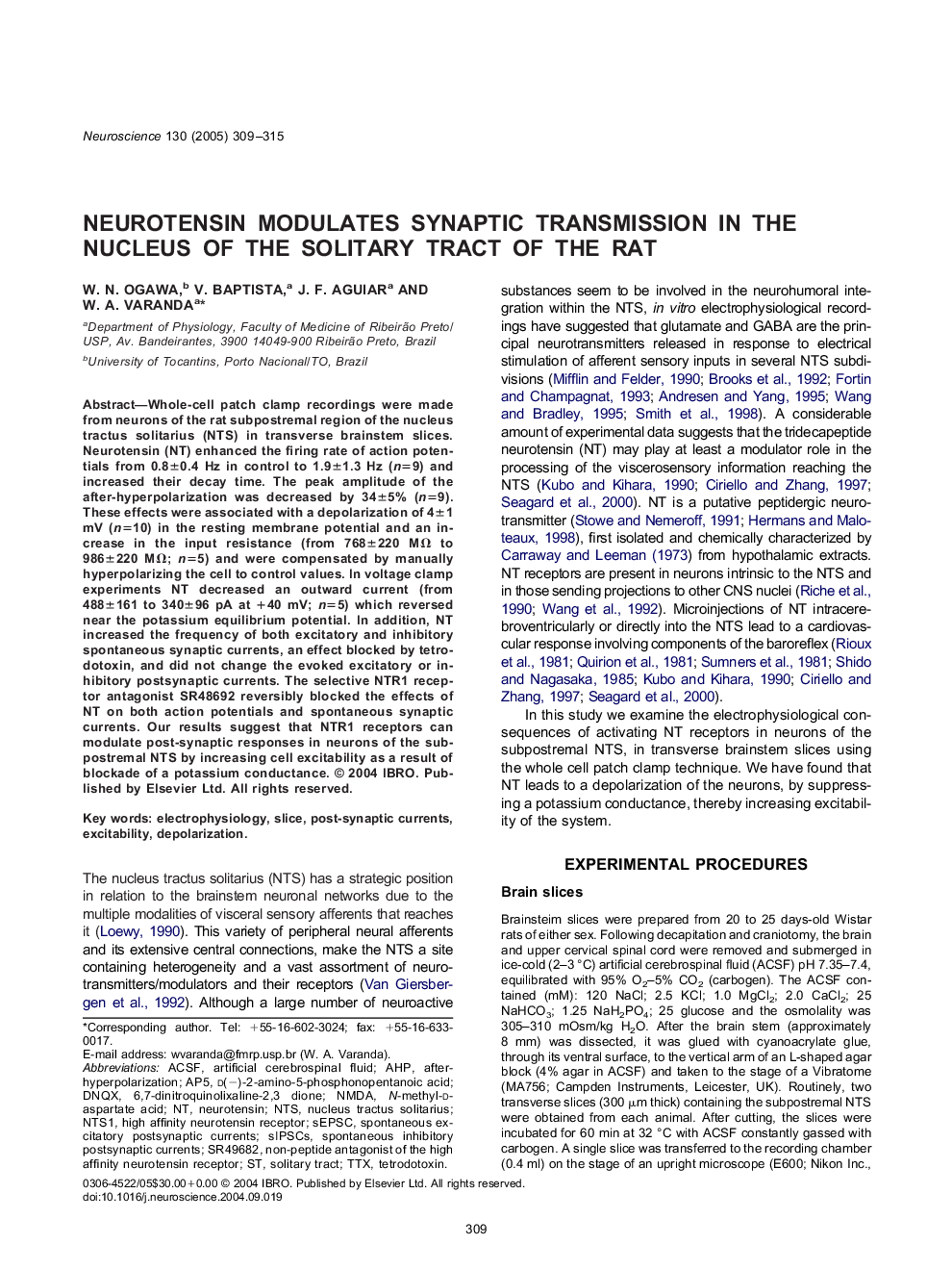| Article ID | Journal | Published Year | Pages | File Type |
|---|---|---|---|---|
| 9425795 | Neuroscience | 2005 | 7 Pages |
Abstract
Whole-cell patch clamp recordings were made from neurons of the rat subpostremal region of the nucleus tractus solitarius (NTS) in transverse brainstem slices. Neurotensin (NT) enhanced the firing rate of action potentials from 0.8±0.4 Hz in control to 1.9±1.3 Hz (n=9) and increased their decay time. The peak amplitude of the after-hyperpolarization was decreased by 34±5% (n=9). These effects were associated with a depolarization of 4±1 mV (n=10) in the resting membrane potential and an increase in the input resistance (from 768±220 MΩ to 986±220 MΩ; n=5) and were compensated by manually hyperpolarizing the cell to control values. In voltage clamp experiments NT decreased an outward current (from 488±161 to 340±96 pA at +40 mV; n=5) which reversed near the potassium equilibrium potential. In addition, NT increased the frequency of both excitatory and inhibitory spontaneous synaptic currents, an effect blocked by tetrodotoxin, and did not change the evoked excitatory or inhibitory postsynaptic currents. The selective NTR1 receptor antagonist SR48692 reversibly blocked the effects of NT on both action potentials and spontaneous synaptic currents. Our results suggest that NTR1 receptors can modulate post-synaptic responses in neurons of the subpostremal NTS by increasing cell excitability as a result of blockade of a potassium conductance.
Keywords
sIPSCspost-synaptic currentsN-methyl-d-aspartate acidNTS1DepolarizationsEPSCDNQXAP5aCSFNMDANTSTTXD(−)-2-amino-5-phosphonopentanoic acidElectrophysiologytetrodotoxinexcitabilitySlicespontaneous excitatory postsynaptic currentsSpontaneous inhibitory postsynaptic currentsSolitary tractAHPartificial cerebrospinal fluidneurotensinnucleus tractus solitariusafter-hyperpolarization
Related Topics
Life Sciences
Neuroscience
Neuroscience (General)
Authors
W.N. Ogawa, V. Baptista, J.F. Aguiar, W.A. Varanda,
